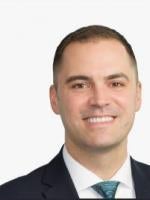OIG REMOVES BASIS FOR REJECTING ADVISORY OPINION REQUESTS
On January 11, 2022, OIG published a final rule removing a frequently cited basis for rejecting requests for advisory opinions. Because the rule is procedural, it was promulgated without notice and comment. OIG unexpectedly released the rule before the close of comments on a request for information in which OIG specifically sought feedback on the advisory opinion process.
The rule removes the requirement that OIG reject advisory opinion requests when “the same or substantially the same course of action is under investigation or has been the subject of a proceeding involving HHS or another governmental agency.” OIG cited two reasons for the change: more flexibility for OIG to issue favorable or unfavorable opinions when conduct under investigation is at issue, and greater transparency for the industry regarding fraud and abuse compliance.
On January 6, 2022, a policy statement issued with the final rule notes that the existence of an active investigation can indicate that the conduct is suspect under the AKS, and that an arrangement with similar conduct “would typically weigh against the issuance of a favorable advisory opinion.”
NEW OIG ADVISORY OPINIONS
Advisory Opinion 22-01
The requestor is a retailer that operates a web-based marketplace that sells a wide variety of consumer goods and services to the general public. Requestor’s customers may enroll in a membership program that offers various benefits, including free expedited shipping for certain goods, video and music streaming services, and digital photo storage. The membership program is available to the general public for a monthly or annual fee. The requestor also has a pharmacy that is a wholly owned subsidiary. The pharmacy participates in pharmacy agreements with commercial payors and pharmacy benefit managers, such as Medicare Advantage plans and Medicaid managed care organizations. Participants in the membership program receive certain benefits in relation to items ordered from the pharmacy, such as free expedited shipping (the pharmacy offers free standard shipping to the general public) and discounts on certain brand-name and generic prescription medications to customers who pay out of pocket.
The requestor offers two discount programs to low-income individuals: a discount on the monthly fee for the membership program, and discounts on certain food and other grocery items. The grocery discount is available to individuals who are not enrolled in the membership program. The requestor advertises these discount programs on multiple outlets, including social media, third-party websites and national marketing channels (e.g., television, the internet and direct mail).
The requestor proposes adding Medicaid enrollment as an additional eligibility criterion. Program marketing would not be targeted at Medicaid beneficiaries, but would note that Medicaid card holders qualify for the program. Discount program eligibility would not be based on actual or anticipated spend, and the discount program would not track pharmacy utilization.
OIG determined that the proposed arrangement would implicate the federal AKS and the beneficiary inducements civil monetary penalty (CMP), because the pharmacy would offer and provide the discount programs to Medicaid beneficiaries who are not otherwise eligible. Providing such programs could induce those beneficiaries to select the pharmacy for the purchase of future drugs, including drugs reimbursable by Medicaid. While there is no applicable AKS safe harbor or exception to the beneficiary inducements CMP, OIG determined that the arrangement posed minimal risks for the following reasons:
-
The nexus between the discount programs and a Medicaid beneficiary’s potential ordering of drugs from the pharmacy is attenuated. The discount programs offer a wide range of benefits, most of which are unrelated to the purchase of prescription drugs. The programs also offers an array of benefits (grocery discounts, video and music streaming, photo storage, etc.) that have no relation to pharmacy services.
-
The arrangement is distinguishable from suspect arrangements that involve remuneration targeted at federal healthcare program beneficiaries. Here, the requestor would use Medicaid enrollment as one of multiple proxies for financial need and not as a way to provide benefits to Medicaid enrollees only. The eligibility process is intended for convenience.
-
The arrangement is unlikely to result in inappropriate utilization or overutilization of items or services reimbursable by federal healthcare programs, or an increase in costs to federal healthcare programs. There is no indication that the free expedited shipping—or any of the other benefits provided under the discount programs—would induce beneficiaries to order prescription drugs that they would not otherwise purchase. The prescription savings benefits also only apply for out-of-pocket costs.
-
The arrangement does not pose a risk to patient safety or raise any quality-of-care concerns. Rather, the discount programs have the potential to provide meaningful assistance to low-income individuals. The grocery discount in particular could reduce barriers for low-income individuals to obtain affordable food.
-
The arrangement does not present a heightened concern with respect to steering beneficiaries to a particular pharmacy. Although the proposed arrangement (in particular the availability of free expedited shipping) may factor into a Medicaid beneficiary’s decision to purchase drugs from the requestor’s pharmacy instead of a pharmacy that does not offer this convenience measure, other important factors (including price, location, availability and medication management considerations) also could inform that decision. Link.
Advisory Opinion 22-02
The requestor is a 501(c)(3) tax-exempt organization that operates several hospitals, including a children’s hospital. This advisory opinion relates to a proposed arrangement between the requestor and two individuals pursuant to which the parties would reduce and subsidize certain costs incurred by qualifying patients at requestor’s children’s hospital. A percentage of patients at the children’s hospital are Medicaid beneficiaries. Two individuals, Donor A and Donor B, want to make a donation to requestor via a testamentary gift from Donor A’s estate. Neither Donor A nor Donor B are providers or suppliers of healthcare items or services, and they are not involved in the healthcare industry aside from their charitable giving.
The donation would be used to establish a restricted fund endowment to subsidize patient bills for families with children who have an established treatment relationship with the children’s hospital and who receive cancer, cardiac or neurosurgical services at the children’s hospital (qualified families). The terms of the agreement condition requestor’s receipt of the funds on making certain reductions in the qualified families’ bills before using the donated funds to subsidize the bills. The requestor would use the donated funds to pay all out-of-pocket costs owed to the requestor by the qualified families for their children’ medical care, including inpatient and outpatient hospital costs and professional fees for items and services provided by requestor’s employed physicians.
Under the arrangement, the requestor would submit the cumulative bill for reimbursement to the appropriate third-party payor, including federal healthcare programs. After payment from the third-party payor, the requestor would calculate the remaining balance on the bill. Qualified families who satisfied the criteria of requestor’s financial assistance policy would receive a financial need reduction, and then all bills, regardless of financial need, would receive a percentage reduction from requestor. Requestor would then use the donated funds to pay any balance remaining on the bill.
OIG concluded that such an arrangement would implicate the federal AKS and the beneficiary inducements CMP because removing the cost-sharing obligation would constitute remuneration to federal healthcare program beneficiaries. However, OIG concluded that the proposed arrangement would present sufficiently low risk under the federal AKS and beneficiary inducements CMP such that OIG would not impose sanctions for the following reasons:
-
The proposed arrangement would cover care-related expenses incurred by all qualified families, regardless of payor, for the treatment of their children at the children’s hospital, including all remaining costs on the bill of an uninsured qualified family. The funds would not be earmarked to cover only cost-sharing for federal healthcare programs, and the funds would cover few federal healthcare program beneficiaries.
-
The requestor will not advertise the proposed arrangement.
-
The requestor will not report unbilled cost-sharing amounts under the proposed arrangement as bad debt on costs reports or shift the costs to third-party payors, including federal healthcare programs.
-
Other safeguards exist to reduce the risk that requestor would use the proposed arrangement to attract highly profitable patients, or that the arrangement would result in overutilization, unnecessary services or increased federal healthcare program costs (e.g., usual clinical criteria for inpatient or outpatient services would continue to apply and insurance type or patient diagnosis or medical condition would not be relevant for determining eligibility).
-
Donor A and Donor B are not healthcare providers or suppliers and are not engaged in healthcare aside from their charitable endeavors. Accordingly, they are not in a position to make or receive referrals for healthcare items or services.
Advisory Opinion 22-03
The requestors own and operate home health agencies (HHAs) and employ certified nurse aides (CNAs) who provide home health aide services to the HHAs’ patients, more than 90% of whom are medically fragile children. The state in which the HHAs operate has a plan that provides Medicaid reimbursement for services provided by parents or other relatives to medically frag ile children who qualify for Medicaid-covered home health aide services if those parents or relatives are certified by the state as CNAs and employed by an HHA. The requestors would like to pay salaries and nurse aide certification program tuition costs for new employees whom requestors have hired to work as CNAs for requestors’ HHAs but who have not yet passed the state certification exam.
Although the proposed arrangement would not be limited to parents or relatives of children requiring home health aide services, requestors anticipate that the vast majority of individuals who would participate in the proposed arrangement would be parents or relatives of Medicaid-eligible, medically fragile children. Requestors also anticipate that these parents or relatives would refer such children to one of requestors’ HHAs. Requestors would offer the proposed arrangement regardless of financial need and would advertise the proposed arrangement as a benefit available to all new employees hired to provide CNA services, without reference to the potential for new employees to provide home health aide services to their children or relatives.
The employees would participate in requestors’ mandatory orientation and education modules and may perform services that are reimbursable by Medicaid. Requestors would pay the employees’ program tuition costs directly to the school operating the nurse aide certification program in which the employee is enrolled, and would pay salaries to the employees for completing the modules and any services they perform pre- and post-CNA certification. The employees’ continued employment would be contingent on their successful completion of the nurse aide certification program and passing the state CNA exam. If an employee is employed by requestors for less than one year after becoming a CNA, that employee would reimburse requestors a prorated amount of the tuition costs. The CNA’s responsibility to reimburse tuition costs would be solely dependent on the CNA’s employment status and not the CNA’s ability to refer patients to requestors. In addition, a CNA’s employment would not be terminated if the children for whom the CNA provides care do not receive home health aide services from requestors’ HHAs at any point.
OIG determined that the proposed arrangement would implicate the AKS because requestors’ payment of salaries and program tuition costs for employees who are parents or relatives of medically fragile children would be remuneration that could induce the parents or relatives to refer such children to requestors’ HHAs for services that are reimbursable by one or more federal healthcare programs. In addition, requestors’ offer to pay salaries and nurse aide certification program tuition costs for parents or relatives of Medicaid-eligible, medically fragile children would likely influence such parents or relatives to select one of requestors’ HHAs for the provision of services to the children, thus implicating the beneficiary inducements CMP. However, OIG concluded that the proposed arrangement would satisfy the statutory exception and regulatory safe harbor for employees, provided that the individuals were bona fide employees, and therefore would not be a prohibited remuneration or inducement.
Advisory Opinion 22-04
The requester, a privately held digital health company, provides patients access to digital contingency management (CM) and related tools to treat substance use disorders. The program is funded by its customers (e.g., health plans, addiction treatment providers, employee assistance programs, research institutions and other treatment providers). . According to the requestor, CM is a highly effective, cost-efficient treatment approach that uses incentives (CM incentives) to motivate and sustain behavioral health efforts by people who suffer from substance use disorders. The program integrates remote tools and services that utilize CM incentives, and is evidence-based and driven by protocols based on research funded by the National Institutes of Health and other peer-reviewed publications and meta-analyses. The program is also consistent with the principles for the effective treatment of substance use disorders published by the National Institute on Drug Abuse.
Under the arrangement, there are two streams of remuneration that potentially implicate the AKS and the beneficiary inducements CMP, and would not satisfy the conditions of an applicable exception or safe harbor. First, customers pay requestor a fee to provide services, some of which could incentivize a patient to receive a federally billable service. Some of the fees customers pay to requestor are passed on to patients as CM incentives for achieving certain behavioral health goals. Some of these goals may involve receiving services that could be billable to federal healthcare programs (e.g., a counseling session) from a particular provider or supplier, which could be a customer.
OIG reiterated its longstanding concerns about offering incentives to induce beneficiaries to obtain federally reimbursable items and services, because doing so could present significant fraud and abuse risks, such as corrupting medical care decision -making, potentially resulting in overutilization, increased costs, steering patients to particular providers or suppliers, or inappropriate medical choices.
Notwithstanding those concerns, OIG concluded that the arrangement presents a minimal risk of fraud and abuse under the AKS and determined not to impose sanctions under the beneficiary inducements CMP based on the following facts and circumstances.
First, OIG pointed to the protocol-driven nature of the CM incentives, the fact that the program was funded by multiple governmentsponsored grants, and the fact that various sources have conclude that CM is a highly effective and cost-efficient treatment, among other factors, to distinguish the CM incentives from an inducement or reward for a particular federally reimbursable treatment.
Second, OIG determined that the risk of the CM incentives encouraging overutilization of reimbursable federal healthcare program items or services was low. While any amount of remuneration can implicate the AKS in OIG’s view, the individual CM incentives given to patients under the program have a relatively low value (typically under $5 per successful test or achievement of other specified behavioral health goal) and are capped at a maximum of $200 per month and $599 per year. Moreover, a substantial portion of the CM incentives are not associated with federally payable services (e.g., participating in self-guided cognitive behavioral therapy modules or self-administered breathalyzer or saliva drug testing). Requestor certified that it is not enrolled as a provider or supplier in any federal healthcare program and accordingly does not bill any federal healthcare program for the services furnished through the program.
Third, OIG acknowledged that the requestor’s customer base is varied, and many of the customers are individuals or entities that do not have an incentive to induce a patient to receive federally reimbursable services. OIG recognized that there may be circumstances where the customer is an entity that bills federal healthcare programs and that a CM incentive might be given for receiving a federally billable service (e.g., attending a federally reimbursable counseling session) rendered by that customer. However, the fees paid by customers do not vary based on the volume or value of any federally reimbursable services, and the program is protocoldriven and set by requestor, not the customers. Moreover, the requestor does not bill federal healthcare programs. These factors led OIG to conclude that the risk of customers paying the requestor fees to generate or reward reimbursable federal healthcare program services would be low.
Finally, OIG noted that the CM incentives, which are loaded onto a smart debit card, are cash equivalents. OIG’s enforcement experience suggests that cash and cash-equivalent remuneration given to beneficiaries may raise substantial fraud and abuse risks. However, according to OIG, this particular arrangement includes certain safeguards that mitigate the risk of fraud and abuse. For example, the requestor—an entity that does not bill federal healthcare programs and does not have an incentive to induce overutilization—determines what types of services each member needs and what CM incentives will be attached to those services. The smart debit card also has anti-relapse protections (e.g., the requestor can monitor use of the smart debit cards, allowing coaches and providers to be signaled of the possible need for intervention in the event of a blocked purchase).
Advisory Opinion 22-05
The requestor is a device manufacturer that makes an investigational therapy that uses a patient’s own cells for treatment of ischemic systolic health failure. This therapy is available for clinical use in the United States under an FDA Category B Investigational Device Exception, which allows use of the device only in a clinical trial. The requestor is sponsoring a clinical trial in which it plans to enroll up to 260 subjects. The Centers for Medicare and Medicaid Services (CMS) evaluated and approved the clinical trial as a Category B Investigational Device Exemption study, meaning that CMS determined that the study met appropriate patient protections and medical necessity. In order to participate in the trial, Medicare beneficiaries would have to pay more than $1,300 in cost-sharing obligations.
The requestor proposed arrangement would subsidize the Medicare cost-sharing obligations in the clinical trial. The treatment involves several steps, all of which are billable to Medicare: a bone marrow cell aspiration procedure performed under local anesthesia, followed by a heart catheter procedure to deliver bone marrow cells into the heart, and approximately seven additional follow-up visits over the course of two years. The requestor stated that the cost-sharing subsidy was necessary because the costsharing obligations are cost-prohibitive for many Medicare beneficiaries and could thus impact the number and diversity of individuals who enroll in the study. The requestor also argued that charging cost-sharing created risks of disrupting the blinding procedures could impact the efficacy of the blind study. Since subjects in the control group would not be receiving any therapeutic benefit, requestor wanted to relieve providers of the need to charge control group subjects for the cost-sharing amounts.
The requestor noted that it would not advertise its payment of cost-sharing obligations, but participants would be informed of the subsidy during the informed consent process.
OIG found that the proposed arrangement would implicate the AKS and beneficiary inducements CMP by providing remuneration to beneficiaries in the form of cost-sharing subsidies and remuneration to investigators and study sites in the form of the opportunity to bill federal health care programs for items and services related to the state, OIG determined that the arrangement would present a minimal risk of fraud and abuse under the AKS, and OIG would exercise its discretion to not impose sanctions under the beneficiary inducements CMP.
First, the proposed arrangement appears to be a reasonable means of promoting enrollment, particularly since 40% of study participants would be in the control group and not receive any therapeutic benefits. The requestor sufficiently demonstrated that the cost-sharing subsidy would be vital to enrolling a sufficient and socioeconomically diverse number of subjects. Furthermore, the subsidy would reduce the likelihood that participants would drop out of the two-year study because of cost.
Second, the proposed arrangement would not likely result in an inappropriate overutilization of services payable by Medicare. The study is capped at 260 participants and includes guardrails that mitigate the risk of inappropriate utilization of services. CMS’s approval of the study as a Category B Investigational Device Exemption study means that CMS determined that the study has appropriate patient protections.
Finally, OIG determined that the proposed arrangement is distinct from inappropriate “seeding” arrangements. OIG noted that participants in the study would not be “locked in” to use the item or service repeatedly in the future, meaning that the requestor would not be in a position to benefit financially from study participants in the future. The therapy is intended as a one-time treatment, and requestor does not anticipate that use of the therapy would prompt future utilization of the therapy or any other products manufactured by requestor by study enrollees.
Advisory Opinion 22-06
The requestor in is a biopharmaceutical company that manufactures and markets two forms of a drug that is US Food and Drug Administration approved and is indicated to treat a rare heart disease that can occur spontaneously or as a hereditary condition and can ultimately lead to heart failure or death. The requestor sponsors a program in which it offers a genetic test to individuals meeting specific eligibility criteria. The test identifies genetic mutations associated with the related disorder or disease, but does not provide sufficient information to diagnose the disease. The requestor contracts with a clinical laboratory and a genetic counseling service, to provide the lab testing and genetic counseling services, respectively. Neither laboratory nor counselors may bill insurers or the patient for services furnished under the program, or engage in promotion.
OIG concluded that the genetic tests, paid for by the requestor under the program, could have remunerative value to the patient and the patient’s physician, but determined that the program posed a low risk for potential fraud and abuse. OIG determined that it would decline to impose administrative sanctions under the AKS or the beneficiary inducements CMP.
First, OIG found that several features of the arrangement make it unlikely to lead to overutilization or inappropriate utilization. The genetic test results indicate only if a patient carries one of the gene mutations and the presence of one of the gene mutations does not determine whether a patient has, or will develop, the disease and is not, standing alone, a sufficient basis to prescribe one of the requestor’s medications. In reaching this conclusion OIG relied on requestor’s certifications that: (i) there is no data to support use of the medications for the treatment of patients who have not been diagnosed with the disease (irrespective of whether one of the gene mutations is present), including, but not limited to, for the prevention of the disease; (ii) it is not medically appropriate or within the standard of care for a physician to prescribe either of the medications for patients who have not been diagnosed with the disease (which requires a separate, objective clinical assessment); (iii) requestor does not promote the use of the medications for patients who have not been diagnosed with the disease; and (iv) requestor does not manufacture, market, promote, or otherwise have a financial interest in any other items or services that are used to treat or diagnose the disease or the disorder. In addition, even where a patient has a diagnosis of the disease, the genetic test result has no bearing on whether the physician would prescribe one of the medications because the Medications are indicated for both forms of the disease.
Second, OIG found the arrangement unlikely to skew clinical decision making or raise concerns regarding patient safety or quality of care. Requestor does not require or otherwise incentivize providers who order genetic tests through the arrangement to recommend, prescribe, or administer any products manufactured by requestor. In addition, based on requestor’s certifications, the genetic test may help to improve patient safety and quality of care by shortening the time to diagnosis of the disease from onset of symptoms, which may allow patients to avoid inappropriate or harmful treatments and obtain the greatest benefit from the medications by starting treatment during the early stages of the disease.
Third, OIG found various safeguards in place to prevent use of the arrangement as a marketing or sales tool to induce physicians to order additional items and services, including further testing or requestor’s products, or to induce beneficiaries to purchase the medications. In particular, requestor certified that its sales representatives do not distribute materials or specimen collection kits in a manner that takes into account a physician’s usage of the arrangement or the physician’s history prescribing the medications or any other therapy used for the disease, and requestor limits the number of kits a sales representative may provide to any individual physician. There are also various limitations on the exchange of data relating to the arrangement that constrain the potential for requestor to use the arrangement to target specific providers or patients for further testing or to encourage prescribing or purchasing the medications. Specifically, neither the lab nor the counseling vendor provide requestor with any individually identifiable health information regarding patients who receive a genetic test or any data that would enable requestor to identify providers who order genetic tests through the arrangement.
OIG REPORTS
On February 14, 2022, OIG issued a report calling for more oversight of items and services provided to hospice beneficiaries by nonhospice providers. According to the report, Medicare paid $6.6 billion to nonhospice providers over the past 10 years for items and services provided to hospice beneficiaries. The report covers nonhospice payments (i.e., payments for items and services provided to beneficiaries outside the Medicare hospice benefit during a hospice period of care) for calendar years 2010 through 2019. The report is intended to offer insight into potential inappropriate payments to nonhospice providers. Key data points include the following:
-
The majority of $6.6 billion payments to nonhospice providers for hospice beneficiaries were for Medicare Part B items and services. Nonhospice payments for Medicare Part A services decreased 45%, and nonhospice payments for Part B items and services increased 38%.
-
The rate of increase in Medicare payments for hospice care was greater than the rate of increase in overall Medicare spending.
-
Almost half of the 1.2 to 1.6 million hospice beneficiaries each year received nonhospice items and services during a hospice period of care.
-
OIG highlights apparent differences in the data among non-profit and for-profit hospices
-
The percentage of hospice payments associated with for-profit hospices relative to nonprofit hospices increased, as did the number of for-profit hospices relative to nonprofit hospices.
-
Medicare Part A nonhospice payments associated with for-profit and nonprofit hospices during a hospice period of care decreased significantly, while Part B nonhospice payments associated with for-profit hospices during a hospice period of care increased significantly.
-
Nonhospice payments associated with for-profit hospices for beneficiaries with a noncancer diagnosis increased.
-
-
The proportion of hospice beneficiaries who received nonhospice items and services remained at an average of 44% from 2010 to 2019, which OIG suggests may indicate potential inappropriate “unbundling” of items and services from the hospice benefit still exists.
OIG noted that it made several recommendations to CMS to establish oversight and scrutiny of Medicare nonhospice payments in three previous OIG reports. CMS responded that it conducted analyses and acknowledged that trends in payments for items, services and drugs provided to Medicare beneficiaries outside the Medicare hospice benefit during a hospice period of care indicated that a potential inappropriate “unbundling” of items, services and drugs existed. CMS stated it continues to monitor and analyze hospice trends and vulnerabilities for program integrity efforts and potential future rulemaking.








 i
i


